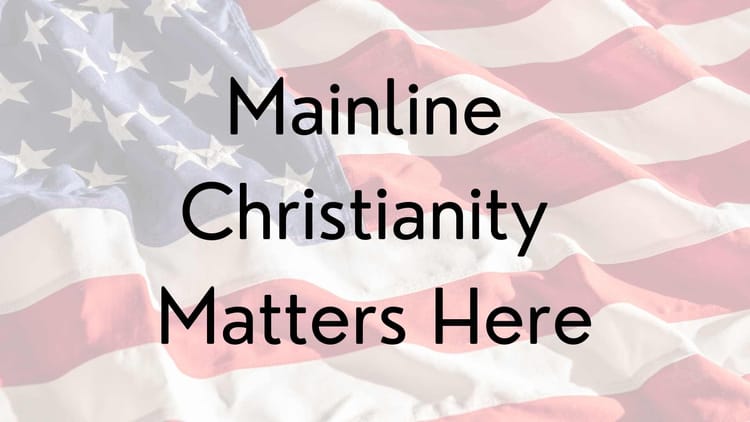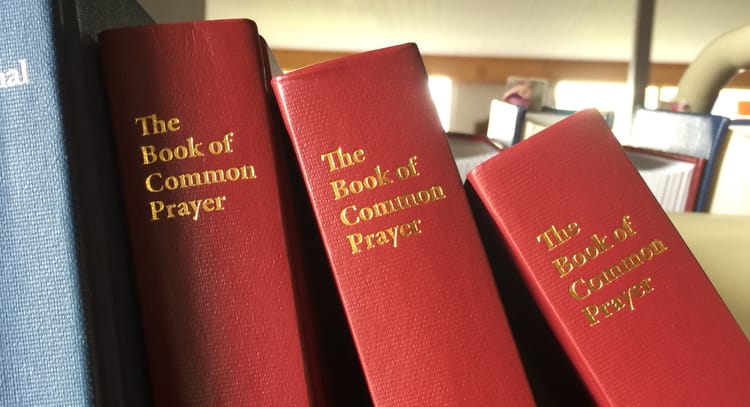Next America 5: The Church’s Financial Forecast [Updated]
![Next America 5: The Church’s Financial Forecast [Updated]](/content/images/size/w960/wp-content/uploads/2014/03/The-Next-America-Pew-and-Paul-Taylor.png)
This post was published on April 26th and updated with a new title and information on The Episcopal Network for Stewardship on April 27th.
Section Summary
Chapter 5, titled “Money Troubles,” presents one wave of bad news after another. In a nutshell, Boomers don’t have the money they expected to have as they near retirement. Things for Generation X and Millennials are even worse:
Millennials and Xers are not only in far worse financial shape than Boomers and Silents now, they are also in worse shape than these older generations were back when they were the age that Millennials and Xers are now. (p. 61)
Yikes! Here’s more disturbing data from this chapter:
- Defined-benefit pensions are mostly gone, leaving Americans on their own for retirement savings. But 75% of all Americans on the cusp of retirement have less than $30,000 in retirement savings.
- Among adults who have a tax-advantaged retirement plan and are near retirement, the typical retirement fund balance is $120,000.
- A $120,000 fund balance at retirement yields approximately $575/month income for life. Social Security makes up the remainder of a retiree’s income.
- Medicare covers only about half of the typical senior’s health bill between age 65 and end of life. The remainder comes first from the retiree’s own pocket. Medicaid only kicks in after the retiree has spent down personal assets.
- The wealth gap between the old and young is large and growing. In 2011, over-65 households had 26 times the wealth of under-35 households. That’s up from 11 times the wealth in 1984. Wow!
- Net worth accumulation among the young has been stifled by the tripling of college costs from 1980-2010 (adjusted for inflation) and the long-term consequences of the housing market collapse.
- Since 1967, poverty rates declined by 2/3 among the 65+. During the same time period, they doubled for people under 35. There are more than twice as many households of young people than older people falling below the poverty line.
The day after I finished this chapter, the New York Times published The American Middle Class Is No Longer the World’s Richest:
“The idea that the median American has so much more income than the middle class in all other parts of the world is not true these days,” said Lawrence Katz, a Harvard economist who is not associated with LIS. “In 1960, we were massively richer than anyone else. In 1980, we were richer. In the 1990s, we were still richer.”
That is no longer the case, Professor Katz added.
So: income inequality is rising, the middle class is losing ground, and young people are struggling with poverty in previously unseen numbers. What does this mean for the church?
Churchwork Reflections
What’s abundantly clear is that, as always, people need God’s love in Jesus Christ. As our nation struggles financially, it’s particularly necessary for us to rediscover the importance of eternal values over material wealth. (With the way campaign financing is going, don’t expect to hear about this in the political arena.) Which means, once again, that the church’s most important task (besides worship) is discipleship.
It also means that it would be wise for the church to teach financial management. God provides all that we have, so don’t we need to think about that at church? Beyond the annual appeal? In our area, some churches host Dave Ramsey’s Financial Peace University. I’m ambivalent about recommending it because the curriculum cost is significant and there’s a risk involved with any new ministry initiative. The Episcopal Church has an alternative called Living Wi$ely, offered for free through The Episcopal Network for Stewardship. If you’ve used it, I’d love to know what you think of it.
Institutionally speaking, it looks likely that the church will need to adjust to more stratified giving levels (a few large donations, many smaller donations) and a lower overall revenue stream. Strategically, churches should explore ways to create additional revenue streams now, while Boomer and Silent generations still are active givers. We already know that Generation X and the Millennials are not proportionally represented in the church. Their lower levels of income and wealth are a double whammy for future giving. If current trends continue, the church’s revenue from annual giving will plunge in the coming decades.
There are many ways churches can diversify revenue streams without compromising mission:
- Rethink your building, if you have one. The Episcopal Church Building Fund is collecting instructional examples of experiments and successful endeavors along these lines. Any church can learn from these.
- Begin or enhance an endowment fund or planned giving program. The Episcopal Church Foundation and The Episcopal Network for Stewardship (or your denomination’s equivalent) can help.
- Hopefully your church is already involved in meeting needs in your community. Would starting a separate non-profit help you to grow that ministry while also making you eligible for funding from more outside sources?
And, of course, if we return to Point #1: make disciples of all generations, this collapse in revenue doesn’t have to happen. Disciples of Jesus Christ give to the mission of God, and that includes the local church. Making and growing disciples of all generations is the work Christ calls us to do.. Given the economic situation of younger generations, however, we need to focus on both discipleship and revenue diversification to sustain ministry into the later years of this century.
(It’s worth noting that churches have more methods to diversify revenue than dioceses (conferences/synods/districts/whatever). A diocese like mine, whose annual revenue is almost completely dependent on apportionment funding, needs to be strategic and intentional about helping churches face the coming financial challenges. I hope the Task Force for Reimagining the Episcopal Church is exploring diocesan minimum viability. How many churches and how much annual revenue does a healthy diocese need? Unless we experience significant turnaround in my diocese, we will be wondering about that in twenty or thirty years.)
Finally, and most importantly, we can remember that the church began without a cent. The resurrection of Jesus Christ did not require funding. The church is called to steward and develop resources for mission and ministry, but the focus must always be God’s mission. Money only matters as it serves that end.
From Reflection to Action
What am I going to do about all this? Well, first, I am going to keep writing about it. As a part-time associate priest, it seems the best thing I can do. I will bring this post to the attention of our rector and vestry. I’ll also be working up some of this data into a short presentation to our Diocesan Council when we meet in retreat in May. I gave them some disturbing data forecasting clergy shortage last year – it’s time for part two on revenue! I’m sure they can’t wait. Not. I’ll also propose joining The Episcopal Network for Stewardship at the diocesan level. It looks like it could be a wise use of $1000/year.
And, I am going to stop saying “the wisdom we need is in the room” at church gatherings. I believe that the church, through the gift of the Holy Spirit, has all the wisdom we need. But we don’t have all the knowledge we need. If the Next America series has taught me anything, it has taught me that the church desperately needs information from beyond our walls.
I’d like to find a way to make the knowledge I’m discovering through this series accessible to more people so it can be brought into more rooms. My discoveries are leading me to new prayers and possibilities. It seems like others should be in on that as well. If you have ideas, I’d love to hear about them. Comment at the bottom of the post or send me an email.
How would you suggest sharing this knowledge more widely?





Member discussion